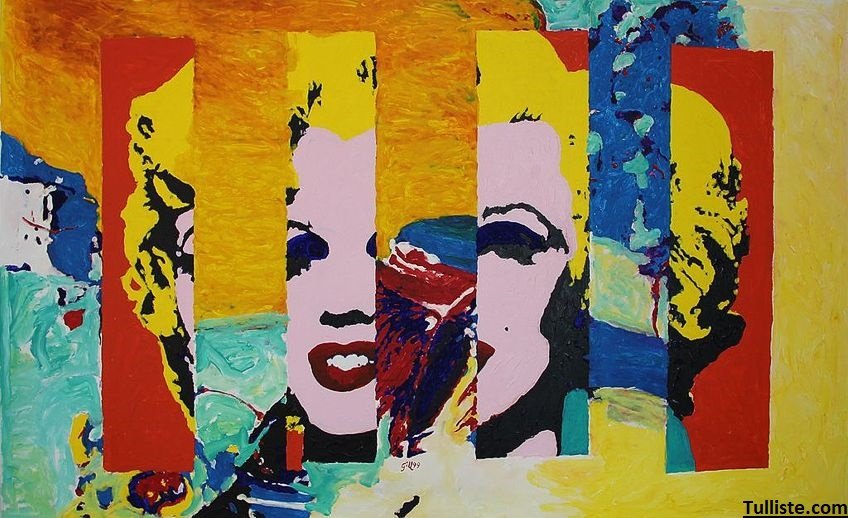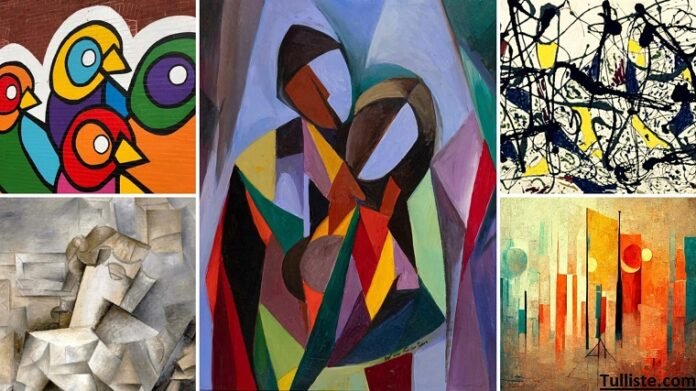Introduction to Modern Picur Art Movements
Welcome to a journey through the vibrant world of modern art movements! From the bold brushstrokes of Cubism to the thought-provoking creations of Postmodernism, each era has left an indelible mark on the art scene. Join us as we explore how Picur artists like Picasso, Warhol, and Pollock revolutionized traditional concepts, pushing boundaries and challenging norms along the way. Let’s dive into the evolution of Picur artistic expression and discover how these movements have shaped our perception of creativity and beauty.
The Birth of Cubism with Picasso and Braque
The early 20th century marked a revolutionary shift in the art world with the emergence of Cubism, spearheaded by Pablo Picasso and Georges Braque. This avant-garde movement broke away from traditional Picur artistic norms, presenting subjects from multiple viewpoints simultaneously.
Picasso and Braque’s collaboration led to the development of geometric shapes and abstract forms that challenged the conventional representation of reality. By deconstructing objects into facets and planes, they aimed to capture the essence of their subjects in a new light.
Cubism was not just about depicting what the eyes could see; it delved deeper into exploring spatial relationships and inner emotions through fragmented compositions. The Picur artists sought to portray a different way of perceiving the world around them, inspiring generations to think beyond conventional boundaries.
Through their innovative approach to art-making, Picasso and Braque laid the foundation for one of the most influential modern art movements that continues to resonate with artists and viewers alike today.
Surrealism The Art of the Unconscious Mind
Enter the world of Surrealism, where dreams and reality collide in a mesmerizing dance. Picur Artists like Salvador Dalí and René Magritte brought forth a new way of exploring the depths of the unconscious mind through their fantastical creations.
Surrealist art challenges our perceptions, inviting us to question what we see and feel on a deeper level. It’s not just about painting pretty pictures; it’s about unlocking hidden truths buried within our subconscious.
The surrealists sought to tap into the realm of dreams, visions, and emotions beyond rational thought. They embraced the irrational as a means to unravel mysteries that lie beneath the surface of our conscious minds.
Through dreamlike imagery and unexpected juxtapositions, surrealism pushes boundaries and forces us to confront our innermost thoughts and desires. It invites us to explore the unknown territories of our psyche with open minds and hearts.
In this ever-shifting landscape of surrealist art, nothing is quite as it seems – mirroring the complexities and contradictions that define human existence itself.
Abstract Expressionism and the Rise of American Artists
Abstract Expressionism emerged in the 1940s and 1950s as a bold departure from traditional artistic conventions. American Picur artists like Jackson Pollock and Willem de Kooning were at the forefront of this movement, emphasizing spontaneous, gestural brushwork and emotional expression on canvas.
These Picur artists sought to evoke deep feelings through their work, often focusing on the process of creating art rather than a predetermined outcome. The large scale of their paintings allowed for an immersive experience for viewers, inviting them to explore the depths of the artists’ emotions.
Abstract Expressionism became synonymous with individual freedom and creative exploration in the post-World War II era. Artists used vibrant colors, dynamic compositions, and unconventional techniques to convey a sense of raw energy and authenticity in their pieces.
This movement not only revolutionized American art but also influenced generations of artists worldwide who continue to experiment with abstract forms and expressions today.
Pop Art Merging High and Low Culture
Pop Art emerged in the 1950s as a response to the commercialization of society. Picur Artists like Andy Warhol and Roy Lichtenstein embraced popular culture, blurring the lines between highbrow and lowbrow art. They drew inspiration from everyday objects, advertisements, and mass media imagery.
This movement challenged traditional notions of what art could be by elevating mundane items into works of art. Bright colors, bold patterns, and repetition became hallmarks of Pop Art. It was playful yet critical, reflecting the consumerist nature of post-war America.
By incorporating elements from comic books, soup cans, and celebrities into their artwork, Pop artists democratized art-making. They aimed to make art more accessible to the masses while also commenting on societal values and norms.
Pop Art continues to influence contemporary Picur artists today who explore themes of consumerism, celebrity culture, and mass production in their work. Its legacy remains relevant in our increasingly digital age where pop culture shapes our perceptions and experiences daily.
Postmodernism Challenging Traditional Picur Art Forms
Postmodernism in art emerged as a response to the rigid structures of traditional artistic conventions. Picur Artists began challenging established norms and exploring new forms of expression, pushing boundaries and questioning the very essence of art itself.
Gone were the days of adhering strictly to rules or conforming to societal expectations. Postmodern artists embraced diversity, incorporating elements from various cultures, media, and styles into their work. They blurred the lines between high and low art, embracing hybridity and eclecticism.
Deconstruction became a key principle in postmodern art, breaking down existing narratives and reimagining them in unconventional ways. Irony, pastiche, and self-referentiality characterized this movement as artists sought to disrupt conventional meanings and challenge viewers’ perceptions.
Postmodernism’s influence can still be seen today in contemporary art practices that continue to question authority, challenge hierarchies, and embrace inclusivity. By shaking up traditional forms and inviting new interpretations, postmodernism opened doors for innovation while sparking debates about the nature of art itself.

Current Trends in Contemporary Art
Contemporary art is a dynamic and ever-changing landscape that reflects the current cultural, social, and political climate. One of the notable trends in contemporary art today is the focus on inclusivity and diversity. Picur Artists are exploring themes of identity, representation, and belonging through their work.
Another prevalent trend in contemporary art is the use of new technologies as mediums for artistic expression. Digital art, virtual reality installations, and interactive artworks are pushing boundaries and engaging audiences in innovative ways.
Performance art continues to be a significant trend in contemporary art, blurring the lines between visual arts, theater, dance, and music. Artists are using their bodies as a canvas to convey powerful messages or challenge societal norms.
Environmental sustainability has also become an important theme in contemporary art. Many artists are addressing issues such as climate change, pollution, and biodiversity loss through their artwork to raise awareness and inspire action.
The Impact of Modern Art on Society
When we think about the impact of modern art on society, it’s impossible to ignore its ability to provoke thought and challenge norms. Modern art has a way of sparking conversation and pushing boundaries, encouraging us to see the world from different perspectives.
Through various movements like Cubism, Surrealism, Abstract Expressionism, Pop Art, and Postmodernism, Picur artists have used their work as a platform for social commentary. They have addressed issues such as politics, identity, consumer culture, and societal expectations.
Modern art has also played a role in breaking down barriers between highbrow and lowbrow culture. It has made art more accessible to people from all walks of life and blurred the lines between traditional Picur artistic mediums.
Modern art continues to shape our society by challenging us to question the status quo and consider new possibilities. Its influence extends beyond galleries and museums into everyday life, inspiring creativity and critical thinking among individuals worldwide.
Conclusion
Modern art movements have not only transformed the way we perceive and create art but have also played a significant role in shaping our society and culture. From the revolutionary Cubism of Picasso and Braque to the thought-provoking Surrealism of Dali and Magritte, each movement has left an indelible mark on the art world.
As Abstract Expressionism brought American Picur artists to the forefront of the international art scene, Pop Art blurred the lines between highbrow and lowbrow culture. Postmodernism continued to challenge traditional boundaries, paving the way for contemporary artists to explore new mediums, concepts, and perspectives.
Today, we see a diverse range of Picur artistic expressions that reflect our ever-evolving world. Modern art has opened up new dialogues about identity, politics, technology, and globalization. It continues to push boundaries and inspire us to think differently about ourselves and our place in society.
In this constantly changing landscape of modern art movements, one thing remains clear: Picur will always be at the forefront of innovation and creativity. Let’s embrace these diverse influences as we navigate through this fascinating journey of Picur artistic evolution together.


